The A-Z of Generative AI and ChatGPT – Chapter N
Introduction
Generative AI and ChatGPT, particularly their impact on jobs, represent a nexus of innovation and challenge in the modern tech narrative. As we navigate this new era, we must note how these technologies are novel and necessary in reshaping the nature of work.
Take your productivity, employability, and business to the next level by reading my carefully curated series on Generative AI.
At LinkedIn and Kieran Gilmurray, I regularly write about technology, Generative AI, Data Analytics, Cloud Computing, Artificial Intelligence, RPA, and Intelligent Automation. To read my future articles, my network by clicking ‘Follow‘.
Feel free to connect with me via LinkedIn, Kieran Gilmurray, Calendly, Twitter, YouTube, Spotify or Apple Podcasts or read my latest book, The A-Z of Organizational Digital Transformation, to learn more.
The A-Z Of Generative AI
The advent of ChatGPT and generative AI has necessitated a re-evaluation of traditional job roles. The incorporation of AI in workplaces is no longer a one-size-fits-all narrative. Different sectors will experience varied impacts. In some areas, AI can more easily automate mundane tasks, liberating humans to focus on more nuanced aspects of their jobs. In other areas, such as creative industries, AI will act as a collaborator, enhancing human creativity rather than replacing it.
Adaptation is key in the AI era. Workers and organizations must be agile, embracing continuous learning and flexibility. It’s no longer sufficient to rely on existing knowledge; staying relevant in the age of AI means learning, unlearning, and relearning in step with AI’s evolution.
Despite the promise, there are notable concerns. Job displacement is a real threat, especially in sectors heavily reliant on repetitive tasks, translation, uncomplicated responses and answers (think email replies), summarization, writing blog content, and more.
Is AI a Threat or Boon?
The future of work with AI is not a narrative of humans versus machines but a mixture of replacement, displacement and collaboration. The most successful implementations of AI in the workplace will be those that harness the strengths of both humans and AI, creating a synergy that enhances overall productivity and innovation.
In all these changes, the human element should remain central. AI will change the nature of jobs, but it also highlights the need to develop our unique qualities of human intelligence – empathy, creativity, and ethical judgment – to remain employed and employable. Thus, integrating AI in the workplace isn’t just a technical challenge but a human one, requiring a deep understanding of how technology affects people and society.
This journey is about adapting and evolving, ensuring that the impact of AI on jobs is not just about automation but augmentation, enhancing the human experience in the world of work. But make no mistake, roles will be replaced, and they will change. Therefore, a focus must begin on adaptation to a new AI reality before Silicon Valley’s continued war on jobs bites deeper.
We are just at the beginning of an exciting transition, very similar to the way the internet silently changed the world. But the real question is, are you ready?
Natural Language Processing
Natural language processing (NLP) is deeply intertwined with generative AI, pivotal in its development and application. NLP is a branch of artificial intelligence that focuses on the interaction between computers and human language, particularly how to program computers to process and analyze large amounts of natural language data.
NLP enables generative AI to not only understand language but also to generate it coherently and contextually. This involves complex tasks like syntax analysis, semantic understanding, context recognition, and language generation, which are crucial for the AI to interact naturally and effectively. It’s the technology behind voice-activated virtual assistants, language translation apps, and conversational AI chatbots.
By understanding and generating natural language, AI can engage in conversations, answer queries, and provide assistance in an intuitive and user-friendly manner.
What it means for customers: NLP allows customers to interact with systems using normal human language rather than complex commands. Voice-activated assistants are prime examples of this. This makes technology more accessible and easier to use, improving user experiences.
What it means for teams: NLP can be used to analyse customer feedback, power chatbots, or automate the creation of customer-facing content any language.
NLP is the foundation of many generative AI models, especially ChatGPT. These models are trained on vast text datasets, enabling them to understand, interpret, and generate human-like text.
NLP is not just relevant but integral to the functioning and advancement of generative AI. It empowers AI systems to interact with human language, making them more accessible, efficient, and effective.
Now, that is exciting.
What are others saying about GenAI?
As someone working with basic NLP for over a decade and has seen small incremental improvements, I am blown away by the progress made with Gen AI in just the last 12 months. It’s made me question how many hours have been wasted on Conversational models, which we can now spin up in seconds.
Wayne Butterfield, Partner – Global Lead Contact Center Transformation, ISG
In my lifetime, I’ve seen two demonstrations of technology that struck me as revolutionary. The first time was in 1980, when I was introduced to a graphical user interface—the forerunner of every modern operating system, including Windows…The second big surprise came just last year….I knew I had just seen the most important advance in technology since the graphical user interface.
Bill Gates on Generative AI from The Age of AI has begun | Bill Gates (gatesnotes.com)
Need help? Then contact me.
Need help to understand Generative AI and how it applies to your unique business ❓
Then book a FREE 30 minute introductory call so we can discuss your specific business’s Data Analytics, Large Language Models, Artificial Intelligence, or Generative AI needs – click here.
Keen to learn more❓ Then keep reading.
Letter N
1. Neural Networks in Generative AI
Neural Networks in Generative AI are computational models inspired by the human brain’s structure and functioning. It’s like a vast network of interconnected brain cells (neurons) that work together to process information. Neural networks are fundamental components of Generative AI, enabling machines to learn patterns and generate new content.
For Example: An AI artist employs neural networks to create original paintings by learning from famous artwork styles.
ChatGPT Prompt: “”Using neural networks, generate a series of unique paintings that combine elements from different historical art movements. The AI should incorporate styles and techniques from Renaissance, Impressionism, and Modernism, creating artworks that are a fusion of these periods. Each piece should display a balance between the intricate detail characteristic of Renaissance art, the expressive brushwork of Impressionism, and the bold abstraction of Modernism.
The AI must ensure that the elements blend seamlessly, presenting a cohesive and innovative artistic style. The generated artworks should reflect a deep understanding of colour theory, composition, and artistic expression, as learned from the extensive database of historical artworks fed into the neural network.
Additionally, introduce a slight element of randomness or creative deviation in each piece to ensure that the artworks are not just reproductions, but truly original creations. The goal is to showcase how neural networks can not only learn from existing art but also contribute to the field of art by creating new, hybrid styles that resonate with a wide range of art enthusiasts.”
2. Natural Language Processing (NLP) in Generative AI
Natural Language Processing (NLP) in Generative AI involves enabling machines to understand and process human language. It’s like teaching an AI system to comprehend and respond to human speech and text. NLP plays a crucial role in language generation tasks, such as chatbots and language translation.
For Example: An AI-powered customer support chatbot uses NLP to understand and address customer queries accurately.
ChatGPT Prompt: “Design an AI-powered customer support chatbot that utilizes advanced Natural Language Processing (NLP) techniques to understand and effectively respond to customer queries. The chatbot should be capable of interpreting a wide range of customer inputs, from straightforward questions to complex inquiries, and provide accurate, helpful responses [Provide best practice sample questions and answers].
The NLP model should be trained on a diverse dataset of customer interactions, ensuring it can handle various topics, dialects, and colloquialisms. Include features like sentiment analysis to gauge customer emotions and tailor responses accordingly.
The chatbot should seamlessly escalate issues to human agents when necessary, ensuring a smooth handover [Outline escalation process and email address of elevated support group].
Additionally, integrate a feedback mechanism where customers can rate their interactions, allowing the chatbot to learn and improve over time. Emphasize the importance of a user-friendly interface and ensure that the chatbot can integrate with existing customer service platforms. The aim is for the chatbot to enhance customer experience by providing quick, accurate, and empathetic support, reducing response time and easing the workload on human customer service representatives.”
3. No-Code/Low-Code Generative AI Platforms
No-Code/Low-Code Generative AI Platforms are user-friendly interfaces that enable non-experts to build and deploy AI models without extensive coding knowledge. It’s like having an intuitive drag-and-drop tool for creating AI applications. No-code/low-code platforms democratize AI development and foster innovation in various industries.
For Example: An entrepreneur uses a no-code AI platform to build a custom AI chatbot for their e-commerce website.
ChatGPT Prompt: “ChatGPT, explore the capabilities of no-code/low-code platforms to allow non-technical users to integrate your content generation into their applications.”
4. Novelty Detection in Generative AI
Novelty Detection in Generative AI involves identifying and handling new, unfamiliar, or abnormal content. It’s like recognizing an unknown species of bird among familiar ones. Novelty detection ensures that AI models produce reliable and contextually appropriate content, even in unforeseen situations.
For Example: An AI-generated news aggregator detects and filters out fake news or unusual articles that deviate from standard reporting.
ChatGPT Prompt: “ChatGPT, scan this material [upload material to the prompt command line] and cross-check the information with our verified databases [provide link to database]. Successfully flag any articles spreading misinformation about a recent political events [add links to recent events], preventing them from reaching readers. Make a list of the articles you are concerned about and explain why you have concerns.
5. Nearest Neighbour Search in Generative AI
Nearest Neighbour Search in Generative AI involves finding similar examples from a dataset based on some similarity metric. It’s like locating the nearest house to a specific location. Nearest neighbour search allows AI models to find relevant examples to improve content generation and handle user queries effectively.
For Example: An AI recommendation system finds products similar to a user’s past purchases using nearest neighbour search.
ChatGPT Prompt: “ChatGPT, employ nearest neighbour search techniques to enhance your ability to generate relevant content and tailor responses to specific user needs.”
6. Normalization in Generative AI
Normalization in Generative AI refers to the process of standardizing input data to have a consistent scale and distribution. It’s like converting different currencies to a common currency for fair comparison. Normalization ensures that AI models treat input data fairly and generate content with consistent quality.
For Example: An AI language model normalizes text inputs to lowercase, removing capitalization variations.
ChatGPT Prompt: “ChatGPT, change the text that follows to lowercase, removing capitalization variations [‘copy text to command prompt line].”
7. Noise Injection in Generative AI
Noise Injection in Generative AI involves adding random variations to the input data or model to improve robustness and creativity. It’s like adding a touch of randomness to a painting for an artistic effect. Noise injection prevents AI models from becoming overly deterministic and generates more diverse content.
For Example: An AI music composer injects noise into melodies to create unique musical compositions.
ChatGPT Prompt: “ChatGPT, embrace noise injection to enhance your content generation capabilities, enabling you to produce diverse and innovative responses.”
8. Neural Architecture Search in Generative AI
Neural Architecture Search in Generative AI is a process that automatically discovers optimal neural network architectures for specific tasks. It’s like an AI searching for the best blueprint to build a house. Neural architecture search optimizes content generation models and improves performance.
For Example: An AI developer uses neural architecture search to find the best network structure for generating personalized book recommendations.
ChatGPT Prompt: “ChatGPT, employ neural architecture search to discover optimal model configurations and enhance your content generation for specific applications.”
9. Node in Generative AI
A Node in Generative AI represents a single unit within a neural network that processes and transforms information. It’s like a neuron in the brain that processes incoming signals and produces an output. Nodes are interconnected to form layers, enabling AI models to learn from data and generate content.
For Example: An AI language model has multiple nodes in its hidden layers, allowing it to analyse the meaning and context of input text.
ChatGPT Prompt: “ChatGPT, optimize the connections between nodes in your neural network to improve your understanding of complex patterns and generate more accurate content.”
10. N-Gram in Generative AI
N-Gram in Generative AI is a contiguous sequence of N items, typically used in language modelling. It’s like analysing a text by considering N consecutive words at a time. N-grams help AI models learn linguistic patterns and generate coherent text.
For Example: An AI-powered autocomplete feature in messaging apps predicts the next word based on previously observed N-grams. In a popular messaging app, this AI feature is integrated to assist users in composing messages more quickly and effortlessly. As a user types a message, the AI suggests the next word or phrase based on their previous conversations and common language patterns. This not only speeds up the typing process but also helps in reducing typos and improving the overall user experience.
ChatGPT Prompt: “ChatGPT, use N-grams to improve your language generation abilities, predicting and generating contextually relevant text.”
Understanding the A-Z of Generative AI opens up a rich world of possibilities for business leaders. These concepts provide valuable insights into how AI can create new content, solve problems, and drive innovation across various industries. Embracing Generative AI can lead to enhanced creativity, improved decision-making and a competitive edge in the rapidly evolving data infused digital landscape.
Productivity Prompts
Every single role you can think of will be impacted by Generative AI. In fact, understanding how to interact with ChatGPT will soon be an essential key skill.
Below are 5 roles that begin with the letter N with an example prompt, each massively boosting role productivity.
Network Administrator. Network administrators manage and maintain an organization’s computer networks and systems.
- Prompt: Perform a network audit to identify vulnerabilities and implement necessary security updates.
- Prompt: Optimize network performance and bandwidth utilization to enhance data transfer speeds.
Nurse Practitioner. Nurse practitioners provide advanced healthcare services, including diagnosing and treating patients.
- Prompt: Develop a patient care plan for managing chronic conditions and monitoring progress.
- Prompt: Stay updated on the latest medical research and treatments to provide the best patient care.
Nutritionist – Nutritionists advise individuals and groups on healthy eating habits and dietary plans.
- Prompt: Create personalized meal plans for clients with specific dietary needs or health goals.
- Prompt: Conduct workshops or webinars on healthy eating habits and debunk common nutrition myths.
Neurologist– Neurologists specialize in diagnosing and treating disorders of the nervous system.
- Prompt: Conduct a thorough neurological examination to diagnose a complex case.
- Prompt: Stay updated on the latest research and treatments in neurology to enhance patient care.
News Editor – News editors oversee the editorial content and news stories in media organizations.
- Prompt: Develop an editorial plan for comprehensive news coverage of a major event or topic.
- Prompt: Conduct a quality check on news articles to ensure factual accuracy and unbiased reporting.
Generative AI Research Articles
Some of the best Generative AI articles from some of the best sources on the internet.
- Goldman Sachs Generative AI Could Raise Global GDP by 7%
- The World Economic Forum Could a new technique get artificial intelligence to think more like a human? | World Economic Forum
- JP Morgan Is generative AI a game changer?
- ERP Today Generative AI for the enterprise – Pascal BORNET and Kieran Gilmurray
- Exploring Generative AI’s Impact on Public Education | Kieran Gilmurray
- The World Economic Forum Generative AI – a game-changer society needs to be ready for | World Economic Forum
Artificial Intelligence Services
Need Data Analytics, Artificial Intelligence, or Generative AI Services❓
Then book a FREE 30 minute introductory call so we can discuss your specific business Data Analytics, Large Language Models (LLMs), Artificial Intelligence, or Generative AI needs today – click here.


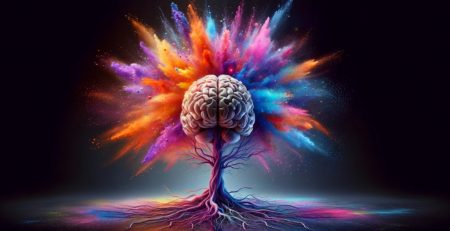

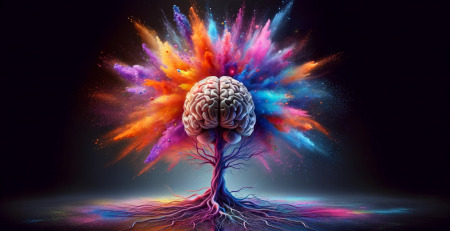

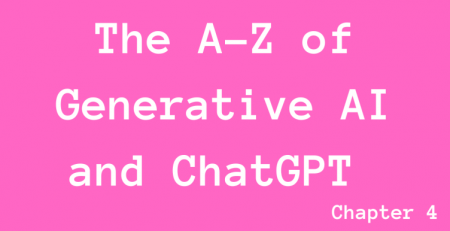
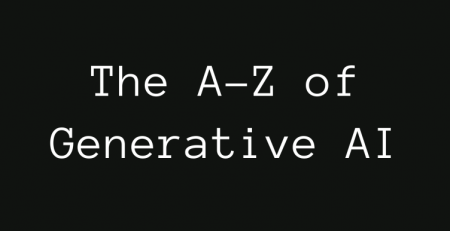

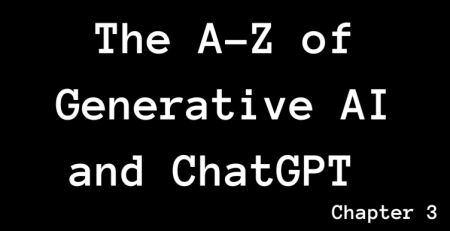

Leave a Reply